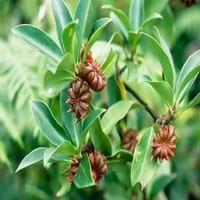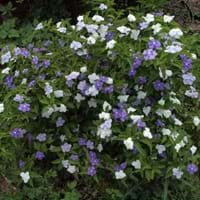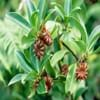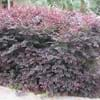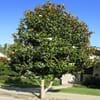Life Span
Perennial
Annual and Biennials
Type
Broadleaf Evergreen
Shrub
Origin
Southeastern United States
Caribbean
Types
Not Available
Not Available
Habitat
Dappled Shade, Sunny Edge, Woodlands
Tropical regions
USDA Hardiness Zone
6-9
10-15
AHS Heat Zone
Not Available
12-9
Sunset Zone
21,22
H1, H2, 22, 23, 24
Habit
Upright/Erect
Upright/Erect
Flower Color
Yellow green
White, Light Yellow, Tan, Ivory
Flower Color Modifier
Bicolor
Not Available
Fruit Color
Green, Brown
Yellow Orange
Leaf Color in Spring
Olive
Dark Green
Leaf Color in Summer
Olive
Dark Green
Leaf Color in Fall
Olive
Dark Green
Leaf Color in Winter
Olive
Dark Green
Leaf Shape
Long, Alternate
Elliptic and Ovate
Plant Season
Spring, Summer, Fall, Winter
Spring, Fall
Sunlight
Full Sun, Partial Sun, Partial shade
Full Sun, Partial Sun
Type of Soil
Clay, Loam, Sand
Loam, Sand
The pH of Soil
Acidic, Neutral
Neutral
Soil Drainage
Average
Average
Bloom Time
Late Spring, Early Summer
Early Spring, Spring, Late Spring, Fall, Late Fall, Early Winter
Tolerances
Not Available
Not Available
Where to Plant?
Ground
Ground, Pot
How to Plant?
Seedlings
Cuttings, Divison, Seedlings
Plant Maintenance
Medium
Medium
Watering Requirements
Average Water Needs, Do Not over Water
Average Water Needs
In Summer
Lots of watering
Lots of watering
In Spring
Moderate
Moderate
In Winter
Average Water
Average Water
Soil pH
Acidic, Neutral
Neutral
Soil Type
Clay, Loam, Sand
Loam, Sand
Soil Drainage Capacity
Average
Average
Sun Exposure
Full Sun, Partial Sun, Partial shade
Full Sun, Partial Sun
Pruning
Remove damaged leaves, Remove dead branches, Remove dead leaves
Remove damaged leaves, Remove dead branches, Remove dead leaves
Fertilizers
Compost
All-Purpose Liquid Fertilizer
Pests and Diseases
Fungal Diseases
Spider mites
Plant Tolerance
Drought
Drought
Flowers
Insignificant
Showy
Flower Petal Number
Single
Single
Foliage Texture
Coarse
Medium
Foliage Sheen
Glossy
Glossy
Attracts
Dogs
Butterflies, Not Available
Allergy
Hypertonia, Nausea, Spasms, Vomiting
Dizziness, Nausea, Swollen Lips
Aesthetic Uses
Beautification, Borders
Showy Purposes
Beauty Benefits
Good for skin
Not Available
Environmental Uses
Erosion control
Air purification
Medicinal Uses
Antibacterial, Appetizer, Expectorant, Homeopathy
Arthritis, Snakebite, Syphilis
Part of Plant Used
Fruits
Bark, Leaves, Root
Other Uses
Used as essential oil, Used in flavouring curries, teas, Used to sweeten the breath
Can be made into a herbal tea
Used As Indoor Plant
No
Yes
Used As Outdoor Plant
Yes
Yes
Garden Design
Hedges, Mixed Border, Screening, Wind Break, Tropical, Wildflower
Feature Plant, Mixed Border, Tropical
Botanical Name
ILLICIUM parviflorum
Brunfelsia Americana
Common Name
Chinese Star Anise, Badiam
Brunfelsia Americana
In Hindi
चक्र फूल
Brunfelsia Americana
In German
Sternanis
Brunfelsia Americana
In French
Anis étoilé
Brunfelsia Americana
In Spanish
Anís estrellado
Brunfelsia Americana
In Greek
Γλυκάνισο
Brunfelsia Americana
In Portuguese
Star Anise
Brunfelsia Americana
In Polish
Anyż
Brunfelsia Americana
In Latin
Star Anise
Hedysarum
Phylum
Magnoliophyta
Magnoliophyta
Class
Magnoliopsida
Magnoliopsida
Order
Illiciales
Brassicales
Family
Illiciaceae
Solanaceae
Clade
Angiosperms
Angiosperms, Eudicots, Rosids
Tribe
Illicieae
Not Available
Subfamily
Illicioideae
Not Available
Number of Species
Not Available
Difference Between Star Anise and Brunfelsia americana
If you are confused whether Star Anise or Brunfelsia americana are same, here are some features about those plants to help you choose better. Many people think that these two plants have the same characteristics, but one can see Star Anise and Brunfelsia americana Information and learn more about it. Fertilizers required for proper growth of Star Anise are Compost, whereas for Brunfelsia americana fertilizers required are All-Purpose Liquid Fertilizer. Hence, one should know the basic difference between Star Anise and Brunfelsia americana if you are planning to have them in your garden to enhance its beauty.
<
Flowering PlantsImportance of Star Anise and Brunfelsia americana
Want to have the most appropriate plant for your garden? You might want to know the importance of Star Anise and Brunfelsia americana. Basically, these two plants vary in many aspects. Compare Star Anise and Brunfelsia americana as they differ in many characteristics such as their life, care, benefits, facts, etc. Every gardener must at least have the slightest clue about the plants he wants to plant in his garden. Compare their benefits, which differ in many ways like facts and uses. The medicinal use of Star Anise is Antibacterial, Appetizer, Expectorant and Homeopathy whereas of Brunfelsia americana is Arthritis, Snakebite and Syphilis. Star Anise has beauty benefits as follows: Good for skin while Brunfelsia americana has beauty benefits as follows: Good for skin.
Compare Facts of Star Anise vs Brunfelsia americana
How to choose the best garden plant for your garden depending upon its facts? Here garden plant comparison will help you to solve this query. Compare the facts of Star Anise vs Brunfelsia americana and know which one to choose. As garden plants have benefits and other uses, allergy is also a major drawback of plants for some people. Allergic reactions of Star Anise are Hypertonia, Nausea, Spasms and Vomiting whereas of Brunfelsia americana have Dizziness, Nausea and Swollen Lips respectively. Having a fruit bearing plant in your garden can be a plus point of your garden. Star Anise has no showy fruits and Brunfelsia americana has showy fruits. Also Star Anise is not flowering and Brunfelsia americana is not flowering . You can compare Star Anise and Brunfelsia americana facts and facts of other plants too.
